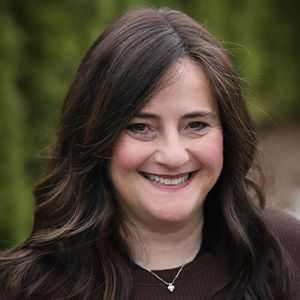The Dating Obstacle Course

How to get past common dating hurdles
This time of year, it’s hard not to wax nostalgic about the good ole days when shidduchim were easily made as maidens dressed in white danced in the field and were hand-selected by the
lads watching them (at least they didn’t send pictures). Or at least the days when your aunt met her neighbor’s nephew in the bungalow colony and convinced you to go out just once — it couldn’t hurt.
Nowadays, it all seems so complicated. By the time you get a yes and give a yes, you can be so invested that a mother sometimes feels she’s already dated the candidate.
And that’s just getting a date.
Once you cross that bridge, the real fun begins. One almost needs a flow chart to keep track. If date number one is awkward, then should you:
- a) go on another because, first date. How can you really know?
- b) declare a one-and-done.
If however, said date was from out of town:
- a) go on another date because, out of town.
- b) Yeah, there is no b. You’re going on another date.
From there the complexity mushrooms. With each passing date, the dilemmas grow exponentially. The excitement builds. The confusion mounts. But it’s all good… until you hit a brick wall.
Today we’ll discuss brick walls and the people who bump into them. With Hashem’s help, we’ll explore the common obstacles that shadchanim and dating coaches see daters grappling with, and attempt to provide some understanding that will, at best, be helpful, and at worst, add insight to injury.
IF is the Source
Mrs. Rochel Goldbaum, internationally acclaimed relationship-dating coach and founder of the Directed Dating Approach, sums up the two main obstacles in dating with the acronym “IF”: Image and Fear. Let’s unpack both.
Image can be divided into two categories — the neighbors and me. The easier part of image issues is worrying about, “What will the neighbors say?” The short answer to that question is that the neighbors are entirely too busy worrying what you’ll say about them to actually say anything about you.
The longer answer is that they either will or won’t say something, but a vort is one night, engagement anywhere from six weeks to a year, and a chasunah, no matter how grand, also only lasts the night. Marriage, if you are so blessed, lasts the rest of your life. Choosing someone for their ability to make you look good for a few weeks is just not efficient or smart. You go home with a person, not an image.
That’s not to say that externals don’t matter at all. Like marries like. It’s certainly easier for heimish to marry heimish and yeshivish to marry yeshivish. Marrying people with similar values is a shortcut of sorts. But when the externals are everything, it detracts focus from the person himself and from the qualities that actually matter in marriage. The neighbors may be impressed with the prize you landed, but will they get up in the middle of the night to change the baby? They will not. So consider if the person you’re marrying will.
This isn’t always easy. As humans, we crave a sense of belonging, worthiness, and validation. In each culture, that looks different. For some, social status is derived through financial success, for others yichus may be the currency, and for others yet it may be education. It doesn’t really matter. The point is that each group defines its success by different criteria and getting a shidduch that mirrors those values brings a feeling of success to the family.
It’s nice when it happens. If all your life you’ve valued learning, and your daughter gets engaged to the rosh yeshivah’s son, it feels great. But who is the boy? Is he a good fit for your daughter — or mostly for your ego?
The Enemy Within
Believe it or not, that was the easy part of image. Now, on to the hard part. Sometimes the enemy we battle is from within. Each bochur and young lady who dates has spent years observing others, consciously or unconsciously, and developing a mental image of the person they’ll marry.
I’ll take a little of cousin Shmuli’s hasmadah, a cup of Tatty’s responsibility, a dash of my brother Eli’s athletic prowess, and a sprinkling of my brother-in-law’s sense of humor. Unfortunately, humans aren’t a salad for which we get to walk through the bar with our empty container and fill it up with all our favorites. We’re more like a pre-packaged schnitzel sandwich that comes as is, mustard included.
Working through internal image issues is a much greater challenge than external ones. It requires, first and foremost, a recognition that we’re imposing an unrealistic standard on a single human being. Notice that when we choose the parts of our ideal mate, we never include Uncle Shlomo’s temper. We take the best of everyone around us and impose that dream on the hapless person before us who doesn’t have a fighting chance of ever meeting our unrealistic standards of hand-picked perfection. Getting past this requires an honest self-evaluation wherein we recognize our own imperfect humanity and look for someone with whom we can grow together in the context of our mutual imperfect humanity.
Once that level of awareness is reached, the dater must tease out which of these attributes are a must and which would be a nice bonus. For some of our younger daters, this poses a challenge, since they haven’t given much conscious thought to the image they carry in their minds. For some of our older daters, this becomes challenging, because the longer they date, the greater the danger of asking, “This is what I waited for?” Internal image must eventually defer to reality.
Where All Fears Meet
The next great emotional frontier is fear. Rabbi Yom Tov Glaser has identified five major fears that drive resistance.
Fear of rejection
Fear of failure
Loss of control
Fear of the unknown
Pain and suffering
A quick glance at this list reveals that dating provides the perfect storm, potentially activating every one of these fears. For each person, there will be a favorite fear — probably the one they carry in all parts of their life — but the reality is that entering a decision as huge as marriage usually entails at least some of each fear.
One of the most useful tools that shadchanim, coaches, and mentors use to gauge the nature of a client’s fear is determining whether the client is afraid of marriage in general or has specific fears about the person they are dating.
In a recent MatchQuest, we discussed the reality our young people are dating in, which differs substantially from the dating world even 20 years ago. They’re walking into an institution that no longer carries the stability it used to have. Most young couples can readily list ten people they know who are divorced, and as many broken engagements. What this means is that marriage, and definitely engagement, no longer guarantee the sigh of relief that they once did.
The pressure is enormous. On the one hand, our young men and women are getting guided direction, which helps move the process along. But a price we pay for that is that some of the spontaneity and inner wisdom is lost. Many singles will say, “I know that by the fourth date I’m supposed to be up to such-and-such, but I’m just not there.”
So much has been scripted that we’re losing access to our natural feelings. And there’s tremendous pressure to stick to a certain number of dates so you don’t get labeled and accused of “stringing someone along.” There’s a lot of performance anxiety fueled by a tremendous fear of failure.
With every step forward, we have to be mindful of the price we exact. Baruch Hashem, our community has made tremendous strides in education around domestic violence, mental illness, addiction, etc. I wouldn’t trade that progress for anything, but it comes at a cost and that cost is fear. I don’t believe it occurred to anyone in my cohort to worry about addiction when we dated. Not that it didn’t exist; it just wasn’t something we considered. Today, it’s in the communal consciousness.
An interesting paradox that’s surfacing is the rise in emotional awareness at the same time that young men and women seem disconnected from their feelings. There’s more education about emotional intelligence in frum media and in the world at large. However, there’s also a cultural predilection towards ignoring messy emotion in favor of perfection. I’m fine, it’s fine, we’re all fine, baruch Hashem.
This dismissal of internal reality has led to a disconnect in which girls, in particular, find it difficult to move from intellect to emotion. This often accounts for the anxiety experienced when couples have been dating for a while: “But, Mrs. Eisemann, I don’t feel anything. Shouldn’t I be excited at this point?”
Couples struggle with vulnerability that’s somewhat forced, yet necessary, and with finding a way to share that’s connecting, yet still appropriate and tzniyusdig. Our job as mentors and coaches is to gently urge them to get in touch with that vulnerable part of themselves and to guide them into expressing themselves in a way that builds connection so the emotional piece can kick in.
For some daters, fear and block come from past trauma. They may have witnessed dysfunctional interactions at home that mar their capacity for intimacy and trust. They may themselves be victims of abuse and trauma, which significantly impacts their ability to connect in a healthy way. Sometimes past trauma only surfaces when the potential for intimate connection is an option — the possibility of engagement becomes a huge trigger.
It’s not simple. So many things can be going on simultaneously. Those of us who are called in as helpers have an achrayus to discern the root of the issue and offer appropriate and meaningful guidance. Is this young man blocked by his inability to get past the image of the girl he thought he’d marry? Is this young woman unable to get past a fifth date because she’s unknowingly terrified of getting close to someone due to unresolved trauma from her controlling father? Is this young man stalling because he’s really not interested but his parents want this shidduch as a feather in their cap?
Exploring these issues in the context of shidduchim affords us an opportunity to hold a mirror to our larger issues. Some of the insight provided in this article serves as a reflection of our broader communal issues and can be used as a step toward important conversations we need to have. And, hopefully, that’s adding insight not to injury chas v’shalom, but to recovery.
Holding a Mirror to Image
When singles seem stuck on image it can be helpful to:
Identify that this is what’s happening.
Help the dater differentiate between personal preference and fear of public opinion.
Remind the dater that perfection is a myth and that humans come with flaws. Everyone is a package — and that includes strengths and flaws.
Remember that the right fit is far more important than the “right image.”
Sift through the externals that seem crucial versus the ones that are preferences.
Allow the dater to mourn the loss of a dream when he or she lets go of the image.
Facing the Fear
In order to help singles face their fears, we have to identify which of the fears is being triggered and respond accordingly.
If someone suffers from generalized anxiety, they’ll benefit most from soothing techniques that quiet their inner turmoil. Some will respond to reminders about emunah that emphasize Hashem’s loving presence and our directive to surrender to His will after making reasonable hishtadlus. This will be most effective when coupled with reassurance that their family will support them and be available for whatever life brings. Very often, in the words of Rochel Goldbaum, they need to come to a place where “they want it just a little more than they’re afraid of it.”
For those struggling with a specific fear about the young man or woman in question, we must be very respectful of the intuition they’re accessing and pay close attention. It’s vital that we don’t dismiss a fear that relates to a middah or a pattern that their date exhibits. Our job at that point is to help the dater articulate the concern and assess if it’s a deal breaker. We must be an open listener who creates the safe space to make that assessment with no judgment.
Finally, for those daters whose fear stems from their own childhood wounds or trauma, the greatest gift we can give them is the gift of being seen. When we acknowledge the pain of their past and gently suggest, with great kindness, the possibility of healing, we’re connecting in the most meaningful way and giving their future its greatest fighting chance.
It Takes a Village
As a community, here are some steps we can take:
Be mindful of our own relationship to image. Observe our language around the Shabbos table and see what messages we unwittingly relay to our children about what we truly value.
Model healthy interactions both with our spouses and with our children, so young men and women approach marriage with excitement rather than fear.
Model self-awareness and encourage self-expression with our children so that our young adults are connected to their emotions.
Become the kind of adults that our young people can turn to when they’re plagued with doubt.
Take the pressure of perfection off of ourselves and our children.
(Originally featured in Family First, Issue 752)
Oops! We could not locate your form.







